From Kitchen Chaos to Mole Mastery: 7 Secrets to Perfecting Black Mole Sauce at Home!
If you've ever tried making black mole sauce at home and ended up with something that tasted more like burnt chocolate than a rich, complex Mexican masterpiece—don't worry, you're not alone. This legendary sauce, born from ancient Aztec traditions and perfected over centuries, can be as mysterious as it is delicious.
In this article, we’ll walk you through everything you need to know—from ingredient sourcing and spice balancing to avoiding the most common mole-making mishaps. Plus, you'll get a handy checklist of tips to keep your mole dark, deep, and divine. Ready to transform your kitchen into a mole haven?
Table of Contents
- What Exactly Is Black Mole Sauce?
- A Flavorful Journey Through Time
- The Holy Spice Trinity (and More)
- Common Mole Mistakes (and How to Avoid Them)
- Top 7 Tips for Making Perfect Black Mole at Home
- Serving Suggestions That Steal the Show
- Storage & Reheating Like a Pro
- Mole Poblano vs. Mole Negro: What’s the Difference?
- Conclusion: Embrace the Darkness—and Enjoy Every Drop
What Exactly Is Black Mole Sauce?
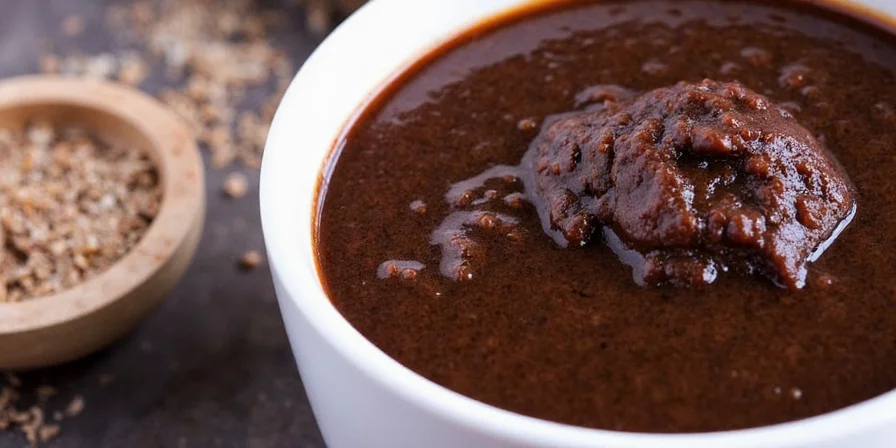
Black mole sauce—mole negro in Spanish—is one of the darkest and most complex members of the mole family. It’s made by combining ingredients like dried chilies, spices, nuts, seeds, fruits, and chocolate, then slow-cooking them into a symphony of flavor. The result? A deeply savory, slightly sweet, smoky, and subtly bitter sauce that’s both haunting and heavenly.
A Flavorful Journey Through Time
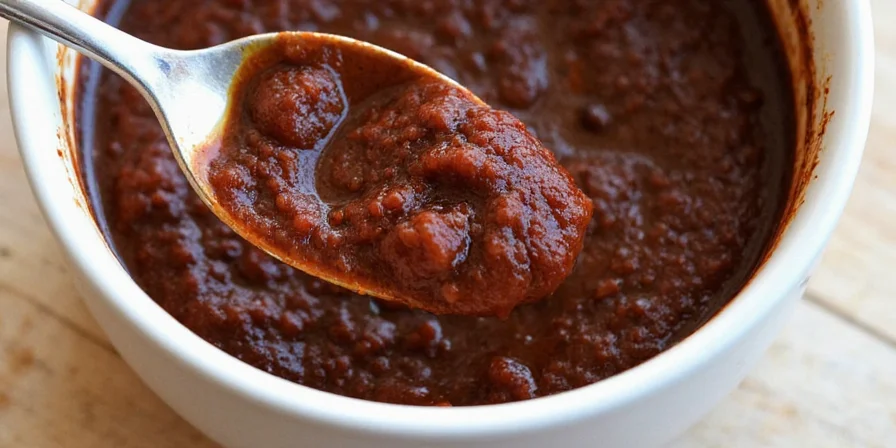
Mole dates back to pre-Columbian Mexico, where indigenous people used local ingredients to create complex sauces. After the Spanish conquest, European ingredients like almonds, bread, and chocolate were added to the mix, giving birth to modern mole recipes.
Mole negro hails specifically from Oaxaca, a region known for its rich culinary heritage. Unlike other moles, which can range from green to red, black mole gets its color from carefully charred tortillas and dried chilies. The longer it simmers, the darker and more intense it becomes—a true labor of love.
The Holy Spice Trinity (and More)
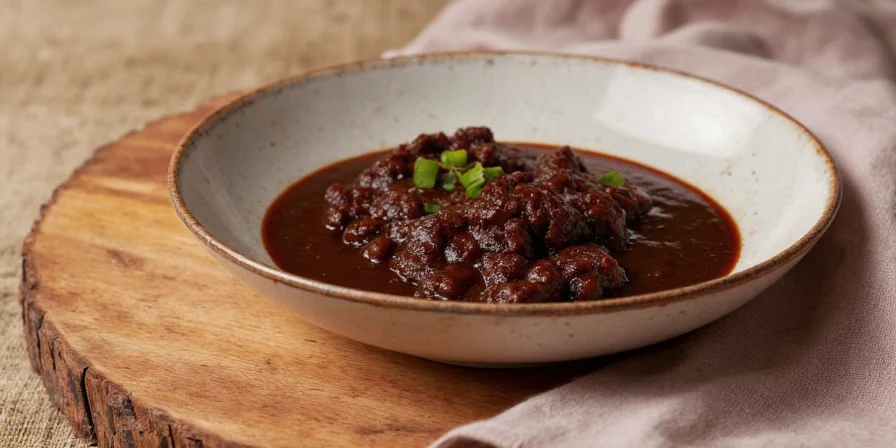
Black mole isn’t just about throwing a bunch of random ingredients into a pot. Each component plays a role, and the balance between sweetness, heat, bitterness, and acidity is crucial. Here’s a breakdown of the core players:
| Ingredient | Flavor Role | Substitutes / Notes |
|---|---|---|
| Chilies (Ancho, Mulato, Pasilla, etc.) | Heat, earthiness, depth | Use a mix for complexity; don’t skip any if possible |
| Chocolate (dark, unsweetened) | Smoothness, subtle bitterness, binding element | Avoid milk chocolate; use cacao nibs or dark couverture |
| Almonds / Pepitas | Creaminess, richness | Toast lightly for extra flavor; substitute with sunflower seeds if needed |
| Garlic, Onion, Tomatoes | Base layer, umami, moisture | Fresh is best; avoid canned tomatoes unless necessary |
| Dried Fruits (raisins, prunes, plantains) | Sweetness, texture | Raisins are essential; prunes add body; omit if too sweet |
| Spices (cinnamon, clove, anise, sesame) | Aroma, warmth, backbone | Toasting spices enhances their impact |
| Charred Tortilla or Bread | Color, smokiness, thickness | Essential for authentic black mole; char slowly over flame |
Common Mole Mistakes (and How to Avoid Them)
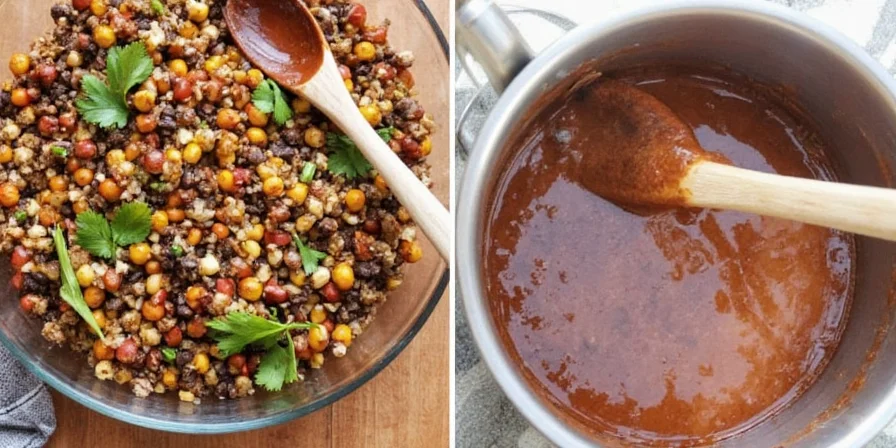
We’ve all been there—trying to make mole and ending up with something that smells more like a campfire gone wrong than a feast fit for kings. Let’s go over the most common mistakes so you can dodge them like a pro.
- Burning the Chilies: Toast them on low heat and stir constantly. Once they smell fragrant but not acrid, you’re good to go.
- Skipping the Toasting Step: Toasting spices and nuts brings out oils and intensifies flavors. Don’t skip this step—it’s not optional.
- Overloading Chocolate: A little goes a long way. Too much chocolate will drown out other flavors.
- Using Canned Broth: Homemade chicken or vegetable broth makes a world of difference in depth and authenticity.
- Not Simmering Long Enough: Mole needs time. At least 2–3 hours of gentle simmering lets the flavors meld together.
Top 7 Tips for Making Perfect Black Mole at Home
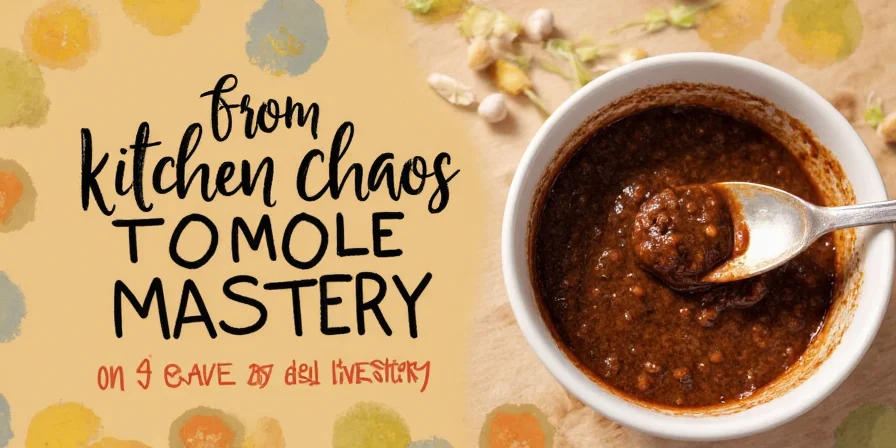
Ready to turn your mole dreams into reality? Here’s a list of practical, easy-to-follow tips to ensure your black mole sauce comes out pitch-perfect every time.
- Taste as You Go: Stir, taste, adjust. Repeat. No recipe is absolute—your palate should guide the process.
- Roast Your Own Nuts: Pre-roasted nuts may seem convenient, but roasting them yourself gives you better control over flavor intensity.
- Don’t Rush the Process: Mole is not a quick meal. Treat it like a project, not a recipe.
- Use Fresh Spices: Old spices lose potency. If your cinnamon sticks smell like cardboard, it’s time for a new bottle.
- Add Liquids Gradually: Add broth in stages. You want the sauce thick enough to coat the back of a spoon, not runny like soup.
- Blend Smartly: Blend in batches to avoid overheating your blender and losing volatile aromatics.
- Let It Rest Overnight: Mole often tastes better the next day as flavors settle and marry together.
Serving Suggestions That Steal the Show
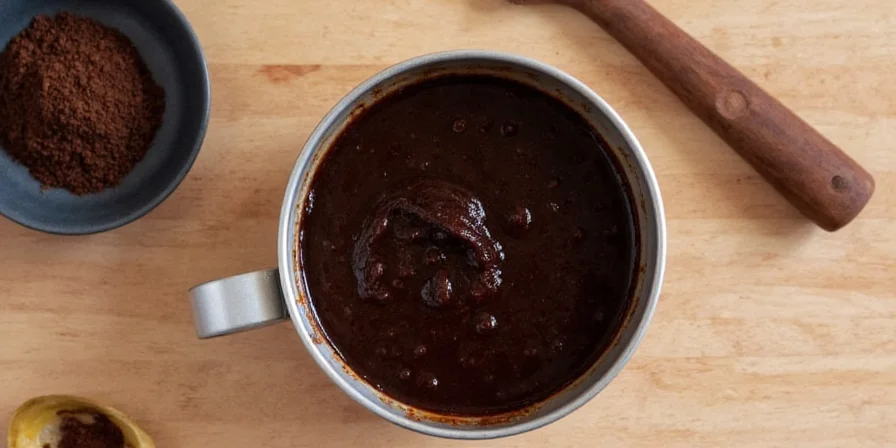
Black mole shines when paired with simple, neutral-flavored dishes that let the sauce steal the spotlight. Here are some classic serving ideas:
- Pavo (Turkey): Traditional for Día de los Muertos—rich, tender meat meets complex sauce.
- Pollo (Chicken): Easier to find and cook, equally delicious with mole negro.
- Rice & Tortillas: Serve with plain white rice and warm corn tortillas to soak up every drop.
- Eggs: Yes, mole eggs! Try it over scrambled or fried eggs for a bold breakfast twist.
Storage & Reheating Like a Pro
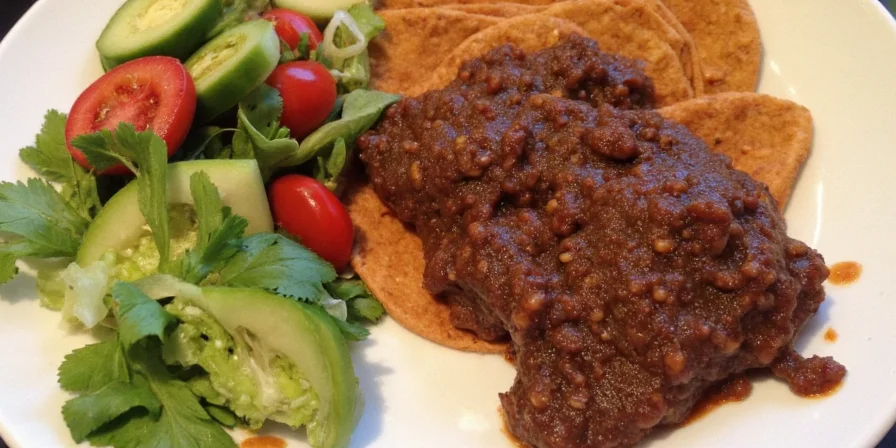
Mole freezes beautifully and actually improves with age. Here’s how to store and reheat your black mole sauce without losing flavor:
- Refrigeration: Store in airtight containers for up to 5 days.
- Freezing: Freeze in portion-sized bags or containers for up to 6 months.
- Reheating: Gently reheat on the stovetop, stirring occasionally. Add a splash of broth or water to loosen the sauce.
Mole Poblano vs. Mole Negro: What’s the Difference?
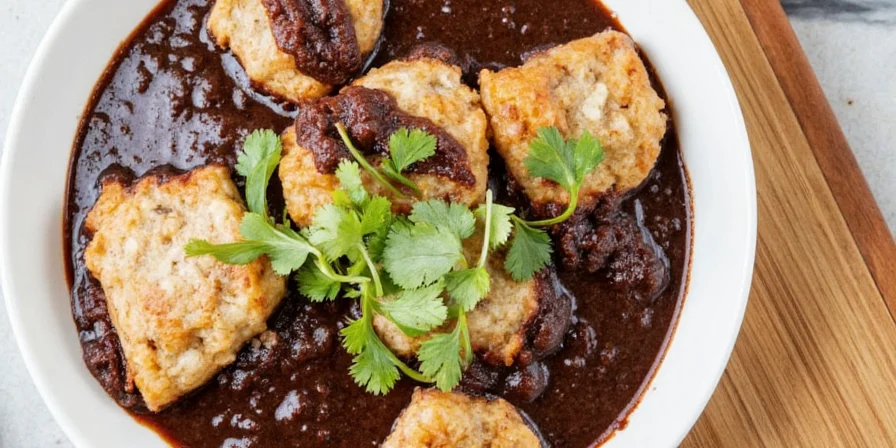
While both hail from Oaxaca and share a similar base, these two mole styles have distinct differences. Let’s break it down:
| Feature | Mole Poblano | Mole Negro |
|---|---|---|
| Color | Reddish-brown | Near-black |
| Key Ingredient | Dark chocolate | Charred tortilla |
| Flavor Profile | Sweet, mild, chocolate-forward | Smoky, complex, with deep roasted notes |
| Typical Use | Everyday meals, weddings | Holiday celebrations, Día de los Muertos |
Conclusion: Embrace the Darkness—and Enjoy Every Drop
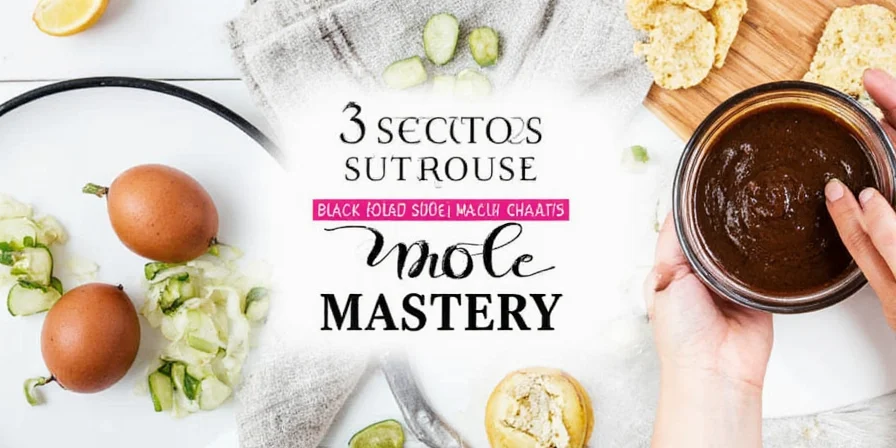
Black mole sauce might seem intimidating at first, but once you understand its layers of flavor and the care each ingredient demands, it becomes less of a mystery and more of a masterpiece waiting to happen.
Whether you're cooking for a holiday, impressing guests, or simply craving a deep dive into global spice traditions, mastering black mole sauce is a rite of passage for any adventurous cook. So grab your apron, sharpen your knives, and embrace the darkness—it tastes amazing.

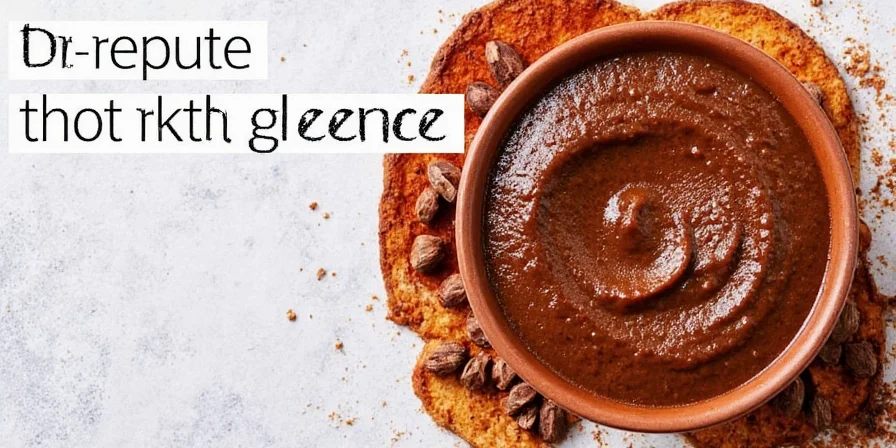









 浙公网安备
33010002000092号
浙公网安备
33010002000092号 浙B2-20120091-4
浙B2-20120091-4